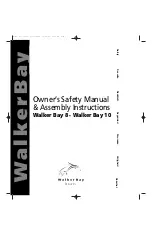
Assembly instructions / inflation/ deflation
Choose a smooth and clean surface to unfold your
AQUA
PARX inflatable boat. Inflate your
AQUA
PARX
boat with an
AQUA
PARX foot-pump or electric-pump, or any pump designed for inflatable boats, and other
low pressure inflatables. These types of pump will have a hose and adapters to fit the valves on this
AQUA
PARX. (connector is included in your repair kit)
a. Side tube valve(s), bottom floor and keel valve - please
see drawing to the right:
Unscrew the valve cap (1). Push button (2) in and turn
approximately 90 degrees so it is in
the “OUT” position.
Insert the pump hose end piece and inflate it until you will
reach the
required pressure. After inflation tighten all the valve caps
(clockwise). Only the valve(s) cap can ensure final AIR
TIGHTNESS.
To release air from the side tubes and bottom floor tube,
remove the valve cap (1) and push button (2) in and turn
approximately 90 degrees so it is in the “IN” position. (3) :
valve base.
b. Max. air pressure : the correct pressure for this item is:
Side tube valve(s): 0,2 bar / 2,88 psi (=200 mBar ). Do not
exceed it.
c. Place your boat in carry bag along with equipment.
d. When storing your boat, keep it in a clean and dry
place.
Any use of an air compressor may result in poor performance or damage to the
AQUA
PARX boat, and
automatically voids all warranties. If you leave your A
AQUA
PARX boat exposed to the hot sun, check the
pressure and deflate it slightly. Otherwise the
AQUA
PARX boat may become over inflated and stretch the
material. The ambient temperature affects the tube’s internal pressure : a variation of 1°C/ 1.8°F causes a
variation of the pressure in the tube of +/- 4 mBar (0.06psi)
Note: If you install a motor larger than the maximum rated horsepower for your boat, you might have
control problems and risk serious injury. Never exceed the maximum rated horsepower.
e. Whenever you take your
AQUA
PARX boat out of the water and deflate it, allow time for it to air out and
dry. Neither the skin/hull nor the inside chambers will suffer from water damage, but stagnant water could
cause mildew and foul odor.























